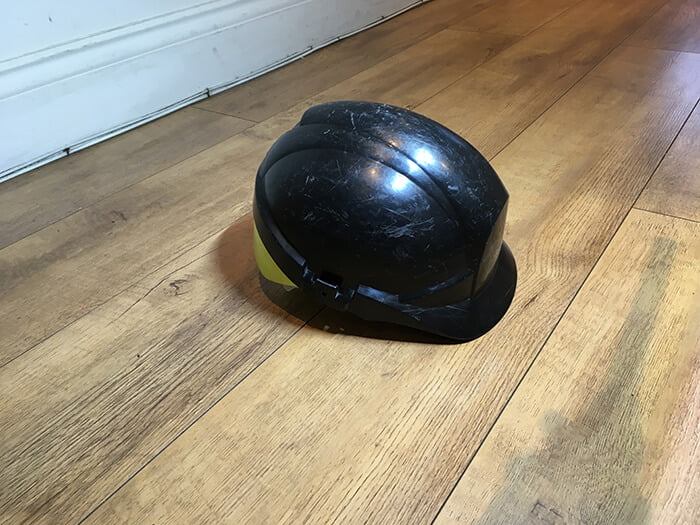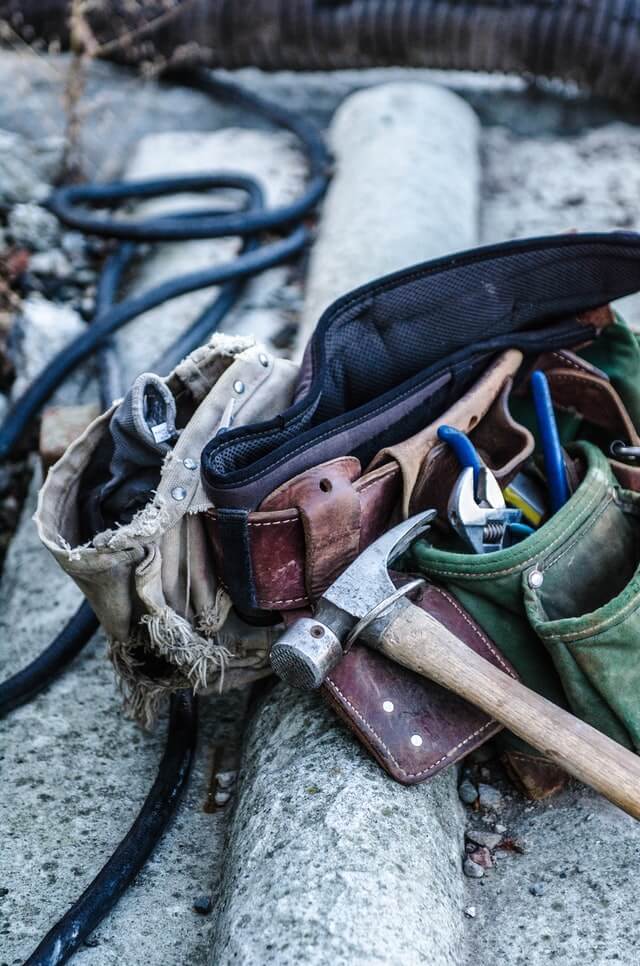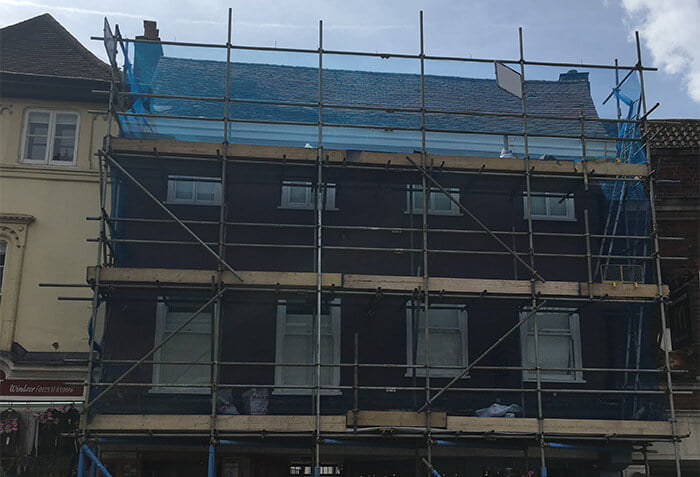For you to work efficiently on a scaffold job, there are several tools and equipment you need to ensure you do your job efficiently. Whether it’s a domestic or commercial project, having these pieces of equipment makes it easier to navigate the scaffold tower and reduces your chances of any accidents. Although the type of equipment you’ll need might vary depending on the job you have at hand, there are some basic tools that you need to have regardless. Read on to find out what these scaffolding tools are.
1. Personal protective equipment(PPE)

To effectively work on scaffolding, the workers need to ensure that they have the proper personal protective equipment to keep them safe from any potential accidents. Some of these protective equipment includes the following:
- boots
- gloves
- hard hat
- high visibility safety jacket
Falling is one of the common causes of most scaffolding accidents. With steel-toed boots, you’ll ensure that you have a proper grip. Getting boot with rubber soles ensures that you have good footing hence reducing your chances of falling due to slipping.
Gloves are ideal especially if you have sweaty palms because they help you hold your tools better when working. They also protect you from any abrasions or cuts. Gloves and boots are ideal for a good grip if you need to climb the scaffold tower.
Hard hats are essential because they protect your head from any objects that may fall on you. High visibility safety jackets ensure that you can be seen properly when working on scaffolding, especially when there’s poor lighting.
2. Scaffold tool belt

A scaffold tool belt is an ideal way for workers to carry their tools when they’re working on scaffolding. The size of the belt might vary depending on the type of tools you’ll be carrying around. Different tool belts carry various equipment, therefore you need to ensure that you’re carrying the right belt for your job to avoid any inconveniences.
3. A scaffold wrench
Poor scaffold assembly is one of the main causes of scaffolding accidents. A scaffolders wrench ensures that the bolts are tightly fastened and it also helps speed up the entire process of putting up scaffolding. They can also be used to loosen the bolts if need be. Carrying a two-in-one wrench helps reduce the number of tools you have to carry hence increasing your chances of safety. Or if you want to speed up and reduce the toll on your body, go for a scaffolders impact wrench that will make the job look easy.
4. An adjustable wrench
When it comes to holding nuts when tightening bolts, an adjustable wrench would be ideal. It makes working on scaffolding easier and faster than it would be working without it. You can also use it to loosen or tighten other fasteners when necessary.
5. A claw hammer

A claw hammer or scaffold hammer is an essential scaffolding tool when assembling or disassembling scaffolding. It’s the best tool to use when putting scaffolding pieces in place especially when it’s a bit tricky to use your hands because it allows you to apply more force.
You can also use the claw hammer to remove any bolts or nails because it provides a better grip. Your needs or the nature of the project you’re working on should determine whether you should use a scaffold or claw hammer.
6. Tape measure

A tape measure is one of those things that you can easily miss when putting together your tools until it’s time to use it. It can be quite tedious having to go down a scaffolding for a mere tape measure. Therefore, it’s advisable to ensure that you have it with you.
With a tool belt, you can easily move around with your equipment when working on scaffolding. The tape measure is also ideal when you want to get accurate measurements. Something that will be required often.
Whether you want to measure the length of the scaffold, the planks, or perhaps check if the scaffold is not tilting, a tape measure will come in handy.
7. A Podger
Even though you might overlook the function of a podger, it is essential for aligning parts together when putting up scaffolding. This will make the whole process of inserting bolts and screwing them together easier.
When using a podger, you first push it through the holes then place your bolts. This tool is especially useful if you’re working on an elevated surface.
8. Levels

Levels are ideal for ensuring that the scaffolding you’re working on is properly levelled. Levels come in different sizes so you need to ensure that you get the right size. If you’re working on a short space, a smaller magnetic level would be ideal.
For walls and other bigger spaces, a larger level would be ideal. Although spirit levels were commonly used, these days people use magnetic or electrical levels for more accurate readings.
Slanting scaffolding can collapse and lead to bad accidents. Using the correct level can help you avoid such because you’ll be able to ensure that your scaffolding is stable and erected correctly.
9. Pipe cutter
Depending on the type of project you’re working on, you might need a pipe cutter in hand to assemble scaffolding. Although scaffolding comes ready to assemble, you might need a pipe cutter if you’re working on an awkward space that requires pipes having different measurements. It’s advisable to take accurate measurements so that you can cut all the pipes uniformly. When it comes to appearance, the pipe cutter looks like a C-clamp.
10. Lanyards
Safety lanyards are one of the scaffolding accessories used to carry tools safely when on a scaffold. Apart from ensuring the safety of the tools, tool safety lanyards also ensure that the tools are within easy reach.
They also keep those below the scaffold safe because there’s no risk of the tools falling on them and causing unnecessary harm. You can ensure that you have a safety lanyard for every tool on your tool belt.11. A socket set
11. A socket set
A socket set is useful for tightening anything that has nuts or bolts. It’s especially useful if you don’t have any spanner. You can use it to tighten or lose the pins and clamps on scaffolding.
Having a socket set is also one way to make your job less time-consuming and it makes the job easier. You should have a socket that has both standard and metric sockets because not all scaffold accessories are similar.
12. Safety harness
Depending on how tall the scaffold is, a good safety harness will always come in handy. Safety harnesses come in different sizes, such as full body and waist sizes. The harness protects anyone working on scaffolding from falling if the scaffold structure collapses because it’s tied to a safety rope.
13. Frames
Frames are the bars and poles used to make a scaffolding structure. It’s important to ensure that the frames are in good condition. Scaffold frames should be replaced if they start to show signs of damage or any rusting.
14. Crossbars
They’re diagonal bars placed across the frame of a scaffold structure. The crossbars give the scaffold structure extra strength enabling it to support heavier loads. They also protect anyone from falling off the scaffold.
15. Planks

Planks are steel or wooden boards that workers work on when on a scaffold. They form the work platform. Planks should be strong enough to hold at least two average-sized men and the building material. Wooden planks should be treated to prevent them from rotting.
16. Brace plates
They’re used for leveling the scaffold and supporting the load. The brace plates have legs and they can be adjusted depending on the job requirements. The plates are ideal for preventing the scaffolding from sinking or slipping if the ground is soft or uneven because they evenly distribute the scaffold’s weight thus there being less pressure from the legs.
17. Connecting pins and clamps
Connecting pins and clamps are necessary when joining all scaffolding pieces together. You should ensure that the pins and clamps are checked on a regular basis to avoid any compromise on the scaffolding structure if any of them fail.
18. Guard rail
This safety equipment prevents the workers and any scaffolding materials from falling from the scaffolding when at work.
19. Safety netting

A debris netting gives additional protection to the workers when on scaffolding. Even though it doesn’t offer the best protection against falls, it protects the people below from falling objects or building materials that may fall from the site.
20. Soleboard
The soleboard is essential for equally distributing the weight of the load to the ground for support. Its dimensions will be determined by the height and width of the scaffold. You also need to consider the ground’s stability where the scaffolding has been constructed.
Apart from having all the equipment and the right tools for scaffolding, it’s advisable to ensure that everything is checked regularly. This will help you identify instances where the integrity of the scaffolding structure has been compromised. Depending on the type of scaffolding project you have, you might need other tools and equipment but these are the basic ones. With the right tools at your disposal, you’ll be able to work with ease.